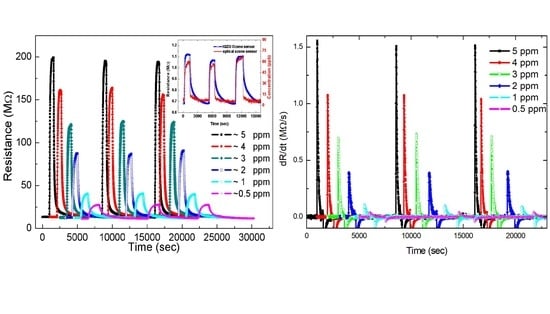Analysis of the Sensing Properties of a Highly Stable and Reproducible Ozone Gas Sensor Based on Amorphous In-Ga-Zn-O Thin Film
Abstract
:1. Introduction
2. Experimental
3. Results and Discussion
4. Conclusions
Acknowledgments
Author Contributions
Conflicts of Interest
References
- Aswal, D.K.; Gupta, S.K. Science and Technology of Chemiresistor Gas Sensors; Nova Publishers: Hauppauge, NY, USA, 2007. [Google Scholar]
- Baraton, M.-I. Sensors for Environment, Health and Security: Advanced Materials and Technologies; Springer Science & Business Media: Berlin, Germany, 2008. [Google Scholar]
- Korotcenkov, G. Handbook of Gas Sensor Materials; Springer: Berlin, Germany, 2013. [Google Scholar]
- Korotcenkov, G.; Brinzari, V.; Cho, B.K. In2O3- and SnO2-Based Thin Film Ozone Sensors: Fundamentals. J. Sens. 2016, 38, 16094. [Google Scholar] [CrossRef]
- Liu, X.; Cheng, S.; Liu, H.; Hu, S.; Zhang, D.; Ning, H. A Survey on Gas Sensing Technology. Sensors 2012, 12, 9635–9665. [Google Scholar] [CrossRef] [PubMed]
- Wetchakun, K.; Samerjai, T.; Tamaekong, N.; Liewhiran, C.; Siriwong, C.; Kruefu, V.; Wisitsoraat, A.; Tuantranont, A.; Phanichphant, S. Semiconducting metal oxides as sensors for environmentally hazardous gases. Sens. Actuators B 2011, 160, 580–591. [Google Scholar] [CrossRef]
- Galatsis, K.; Li, Y.X.; Wlodarski, W.; Comini, E.; Sberveglieri, G.; Cantalini, C.; Santucci, S.; Passacantando, M. Comparison of single and binary oxide MoO3, TiO2 and WO3 sol-gel gas sensors. Sens. Actuators B 2002, 83, 276–280. [Google Scholar] [CrossRef]
- Zavabeti, A.; Ou, J.Z.; Carey, B.J.; Syed, N.; Orrell-Trigg, R.; Mayes, E.L.H.; Xu, C.; Kavehei, O.; O’Mullane, A.P.; Kaner, R.B.; et al. A liquid metal reaction environment for the room-temperature synthesis of atomically thin metal oxides. Science 2017, 358, 332–335. [Google Scholar] [CrossRef] [PubMed]
- Carey, B.J.; Ou, J.Z.; Clark, R.M.; Berean, K.J.; Zavabeti, A.; Chesman, A.S.; Russo, S.P.; Lau, D.W.M.; Xu, Z.-Q.; Bao, Q.; et al. Wafer-scale two-dimensional semiconductors from printed oxide skin of liquid metals. Nat. Commun. 2018, 8, 14482. [Google Scholar] [CrossRef] [PubMed]
- Wang, Q.; Yu, Y.; Liu, J. Preparations, Characteristics and Applications of the Functional Liquid Metal Materials. Adv. Eng. Mater. 2017, 1700781. [Google Scholar] [CrossRef]
- Wu, C.H.; Jiang, G.J.; Chang, K.W.; Lin, C.W.; Chen, K.L. Highly sensitive amorphous In-Ga-Zn-O films for ppb-level ozone sensing: Effects of deposition temperature. Sens. Actuators B 2015, 211, 354–358. [Google Scholar] [CrossRef]
- Chen, K.L.; Jiang, G.J.; Chang, K.W.; Chen, J.H.; Wu, C.H. Gas sensing properties of indium-gallium-zinc-oxide gas sensors in different light intensity. Anal. Chem. Res. 2015, 4, 8–12. [Google Scholar] [CrossRef]
- Somiya, S. Handbook of Advanced Ceramics: Materials, Applications, Processing, and Properties; Elsevier: Amsterdam, The Netherlands, 2013. [Google Scholar]
- Yagi, N.; Egami, N.; Shimidzu, N.; Haseyama, M. A Review of Broadcasting Technology. ITE Trans. MTA 2013, 1, 10–19. [Google Scholar]
- Jeong, H.; Kong, C.S.; Chang, S.W.; Park, K.S.; Lee, S.G.; Ha, Y.M.; Jang, J. Temperature Sensor Made of Amorphous Indium-Gallium-Zinc Oxide TFTs. IEEE Electron Device Lett. 2013, 34, 1569–1571. [Google Scholar] [CrossRef]
- Du, X.; Li, Y.; Motley, J.R.; Stickle, W.F.; Herman, G.S. Glucose Sensing Using Functionalized Amorphous In−Ga−Zn−O Field-Effect Transistors. ACS Appl. Mater. Interfaces 2016, 8, 7631–7637. [Google Scholar] [CrossRef] [PubMed]
- Yang, D.J.; Whitfield, G.C.; Cho, N.G.; Choa, P.-S.; Kim, I.D.; Saltsburg, H.M.; Tuller, H.L. Amorphous InGaZnO4 films: Gas sensor response and stability. Sens. Actuators B 2012, 171, 1166–1171. [Google Scholar] [CrossRef]
- Kang, D.; Lim, H.; Kim, C.; Song, I.; Park, J. Amorphous gallium indium zinc oxide thin film transistors: Sensitive to oxygen molecules. Appl. Phys. Lett. 2007, 90, 192101. [Google Scholar] [CrossRef]
- Zan, H.-W.; Li, C.-H.; Yeh, C.-C.; Dai, M.-Z.; Meng, H.-F.; Tsai, C.-C. Room-temperature-operated sensitive hybrid gas sensor based on amorphous indium gallium zinc oxide thin-film transistors. Appl. Phys. Lett. 2011, 98, 253503. [Google Scholar] [CrossRef]
- Jeng, C.-C.; Chong, P.J.H.; Chiu, C.-C.; Jiang, G.-J.; Lin, H.-J.; Wu, R.-J.; Wu, C.-H. A dynamic equilibrium method for the SnO2-based ozone sensors using UV-LED continuous irradiation. Sens. Actuators B 2014, 195, 702–706. [Google Scholar] [CrossRef]
- Wu, C.-H.; Jiang, G.-J.; Chiu, C.-C.; Chong, P.; Jeng, C.-C.; Wu, R.-J.; Chen, J.-H. Fast gas concentration sensing by analyzing the rate of resistance change. Sens. Actuators B 2015, 209, 906–910. [Google Scholar] [CrossRef]
- Carotta, M.C.; Cervi, A.; Fioravanti, A.; Gherardi, S.; Giberti, A.; Vendemiati, B.; Vincenzi, D.; Sacerdoti, M. A novel ozone detection at room temperature through UV-LED-assisted ZnO thick film sensors. Thin Solid Films 2011, 520, 939–946. [Google Scholar] [CrossRef]
- Wu, R.-J.; Chen, C.-Y.; Chen, M.-H.; Sun, Y.-L. Photoreduction measurement of ozone using Pt/TiO2-SnO2 material at room temperature. Sens. Actuators B Chem. 2007, 123, 1077–1082. [Google Scholar] [CrossRef]
- Mills, S.; Lim, M.; Lee, B.; Misra, V. Atomic layer deposition of SnO2 for selective room temperature low ppb level O3 sensing. ECS J. Solid State Sci. Technol. 2015, 4, S3059–S3061. [Google Scholar] [CrossRef]
- David, M.; Ibrahim, M.H.; Idrus, S.M.; Azmi, A.I.; Ngajikin, N.H.; Marcus, T.C.E.; Yaacob, M.; Salim, M.R.; Aziz, A.A. Progress in Ozone Sensors Performance: A Review. J. Teknol. 2015, 73, 23–29. [Google Scholar] [CrossRef]
- Katsarakis, N.; Bender, M.; Cimalla, V.; Gagaoudakis, E. Ozone sensing properties of DC-sputtered, c-axis oriented ZnO films at room temperature. Sens. Actuators B Chem. 2003, 96, 76–81. [Google Scholar] [CrossRef]
- Korostynska, O.; Arshak, K.; Hickey, G.; Forde, E. Ozone and gamma radiation sensing properties of In2O3: ZnO:SnO2 thin films. Microsyst. Technol. 2008, 14, 557–566. [Google Scholar] [CrossRef]
- Li, M.; Zhang, W.; Shao, G.; Kan, H.; Song, Z.; Xu, S.; Yu, H.; Jiang, S.; Luo, J.; Liu, H. Sensitive NO2 gas sensors employing spray-coated colloidal quantum dots. Thin Solid Films 2016, 618, 271–276. [Google Scholar] [CrossRef]
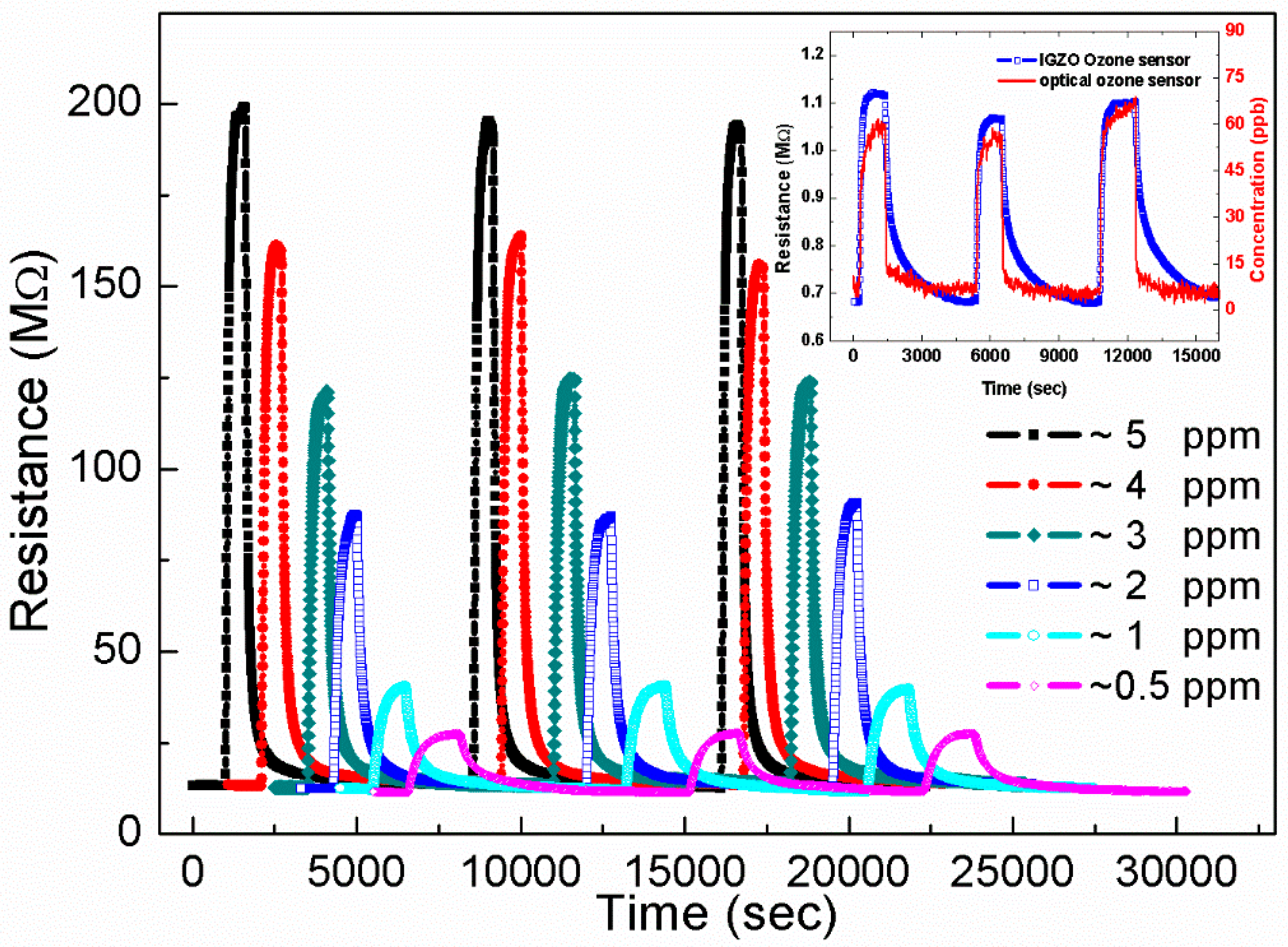
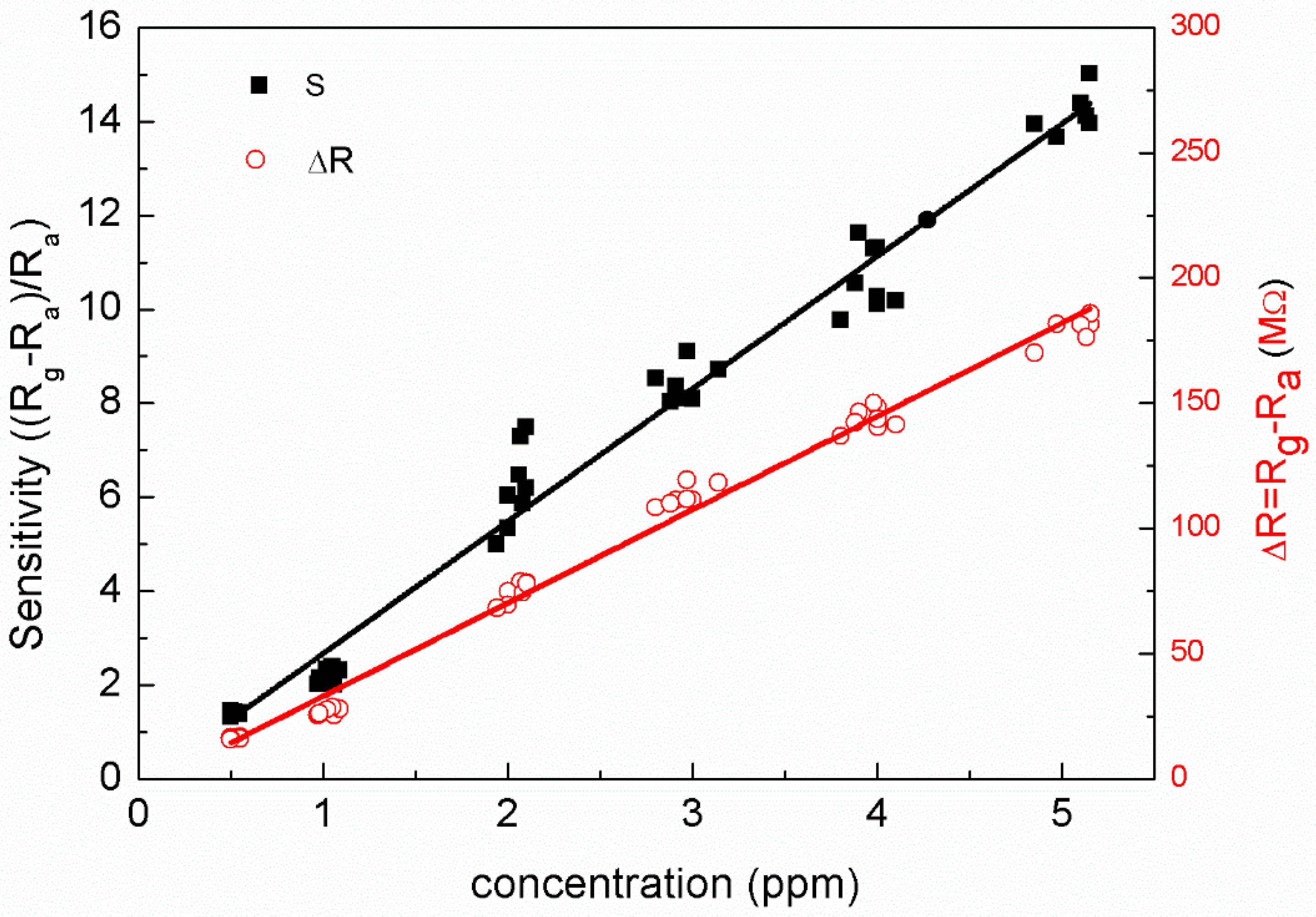
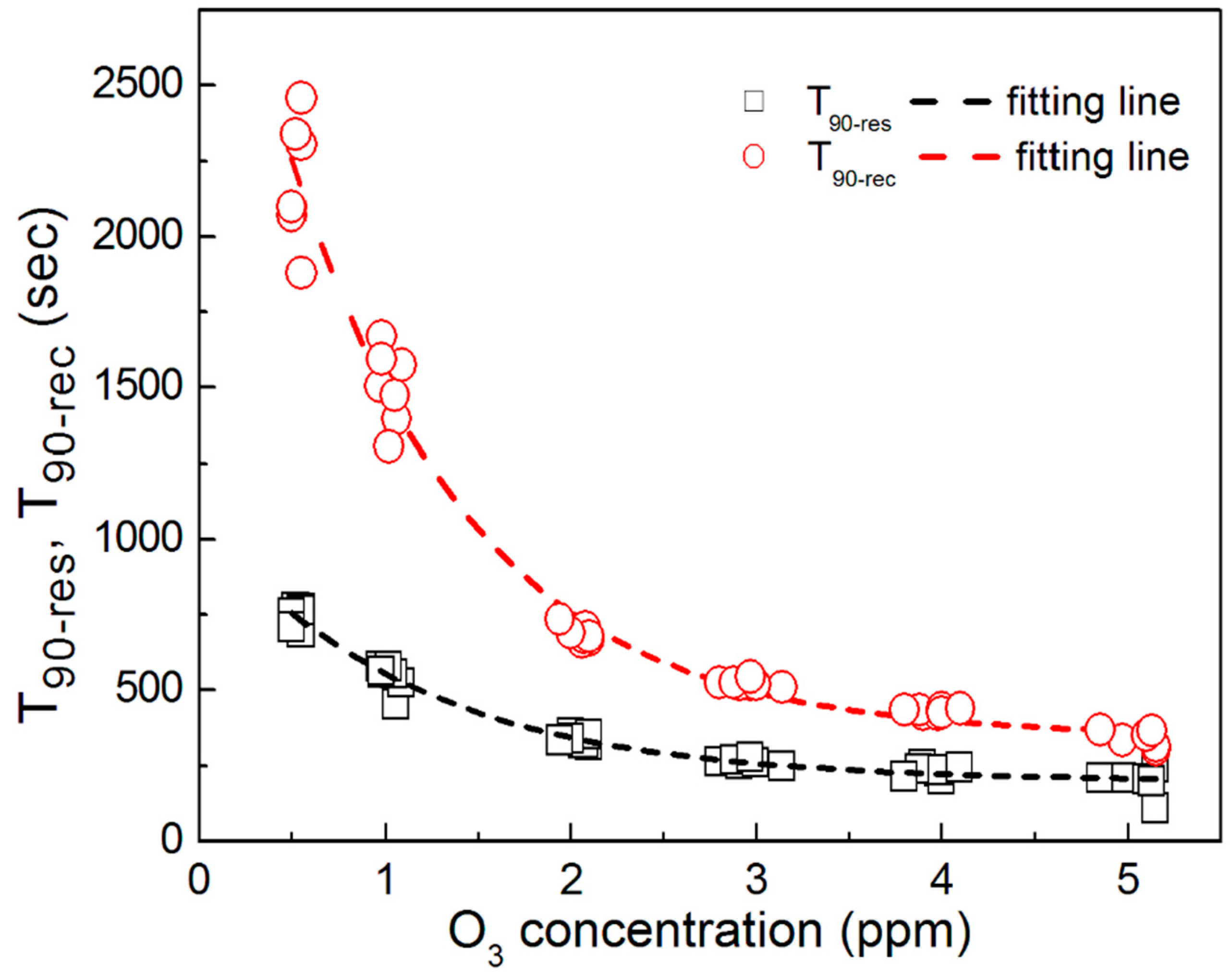
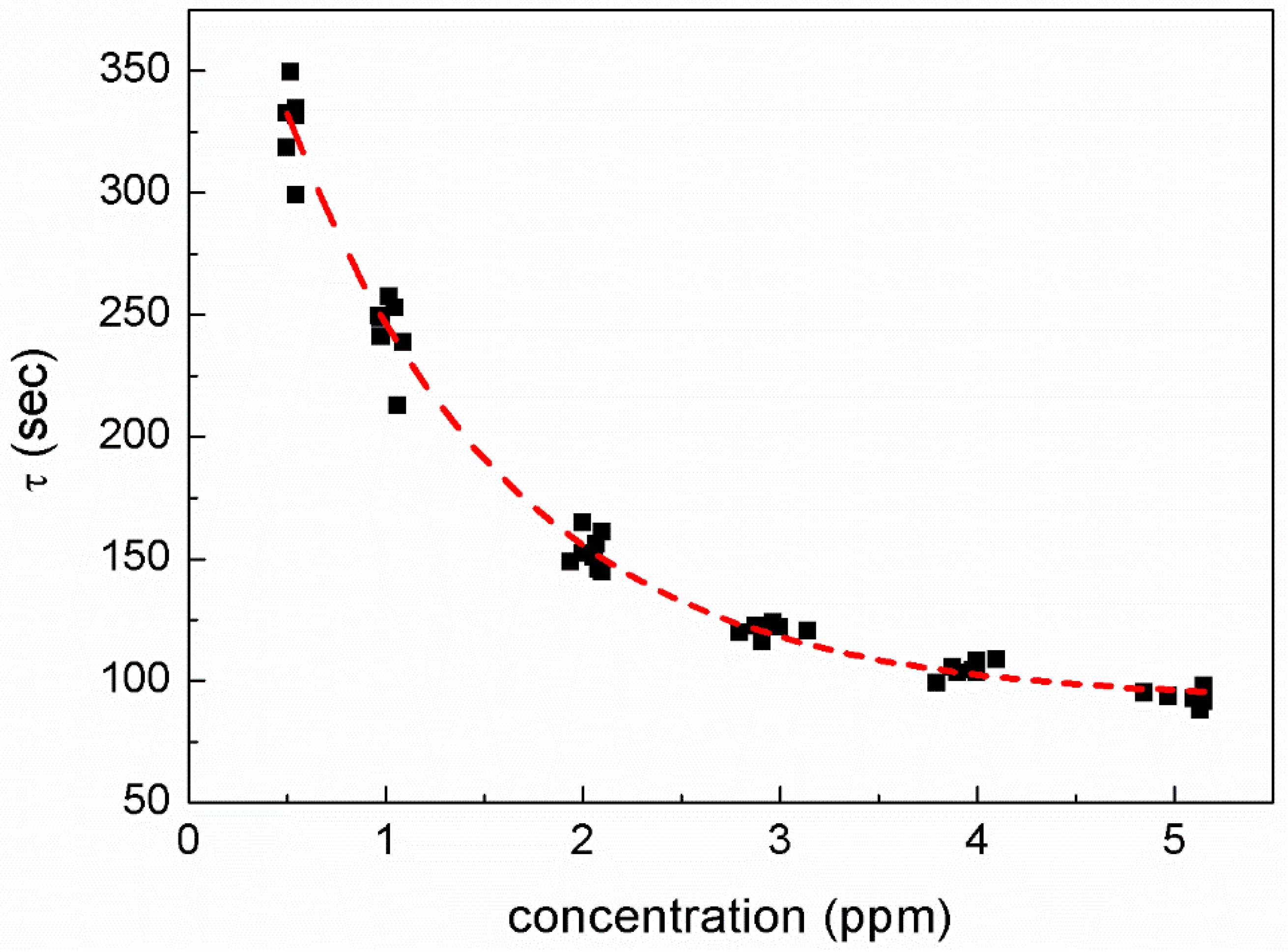
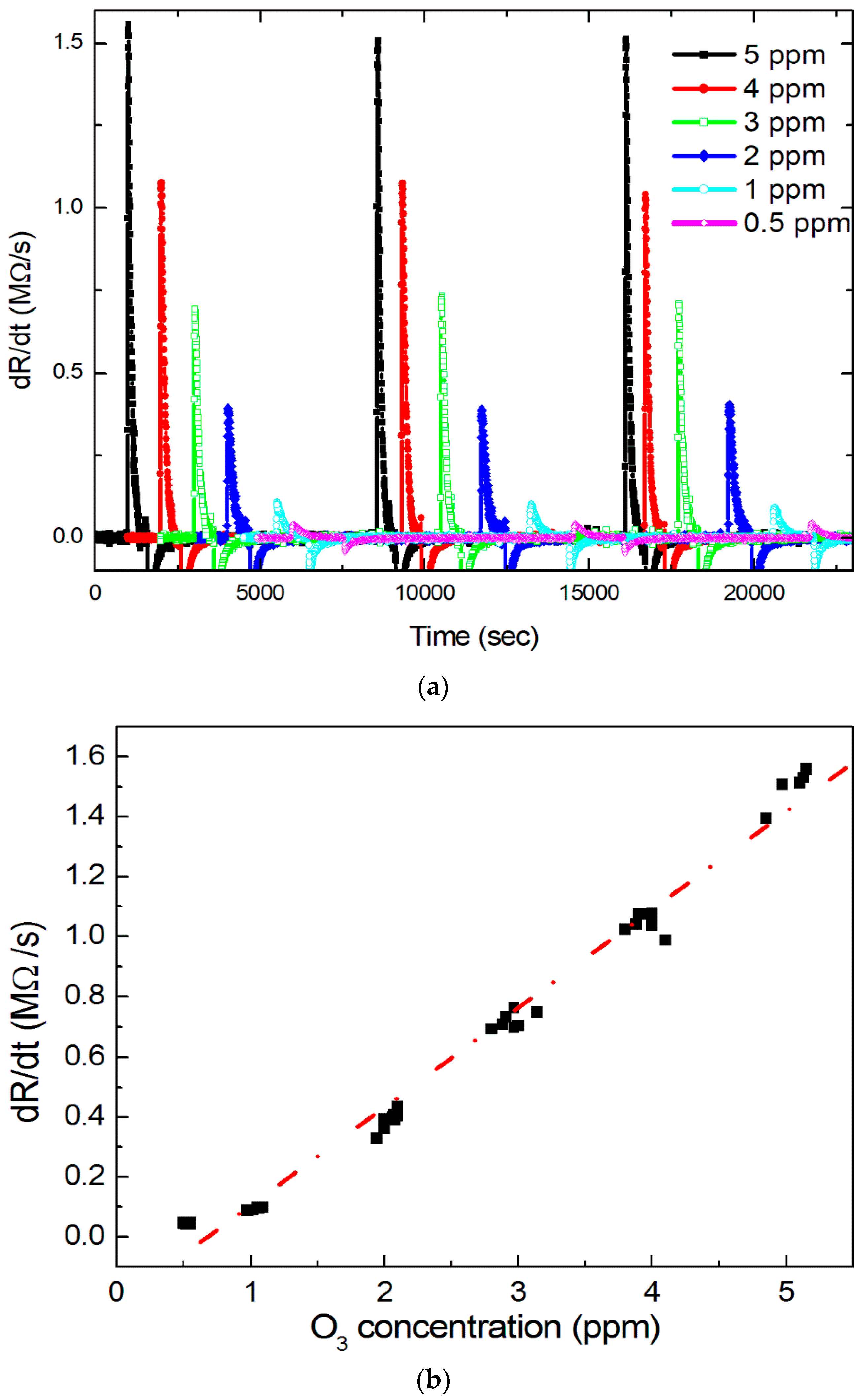
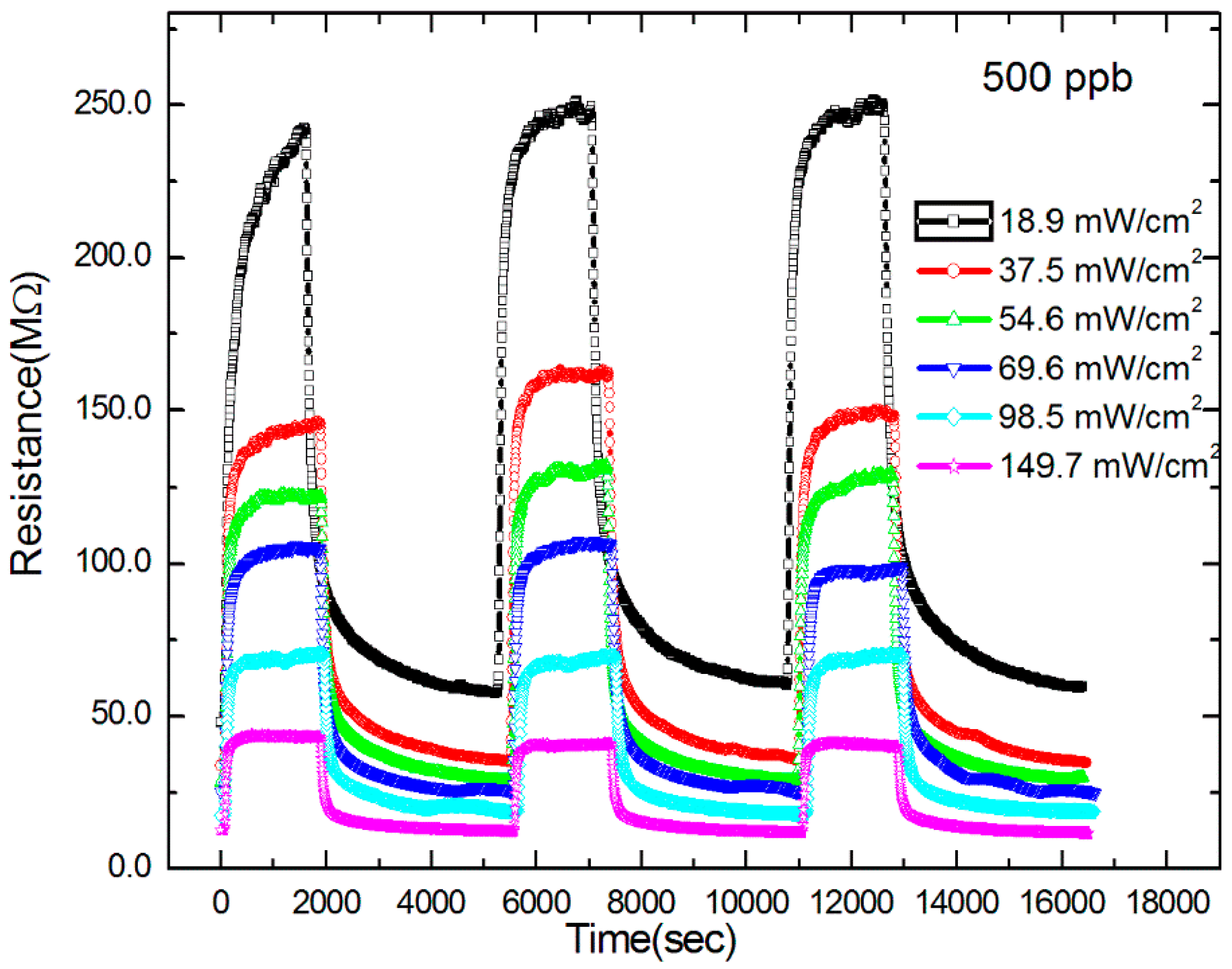
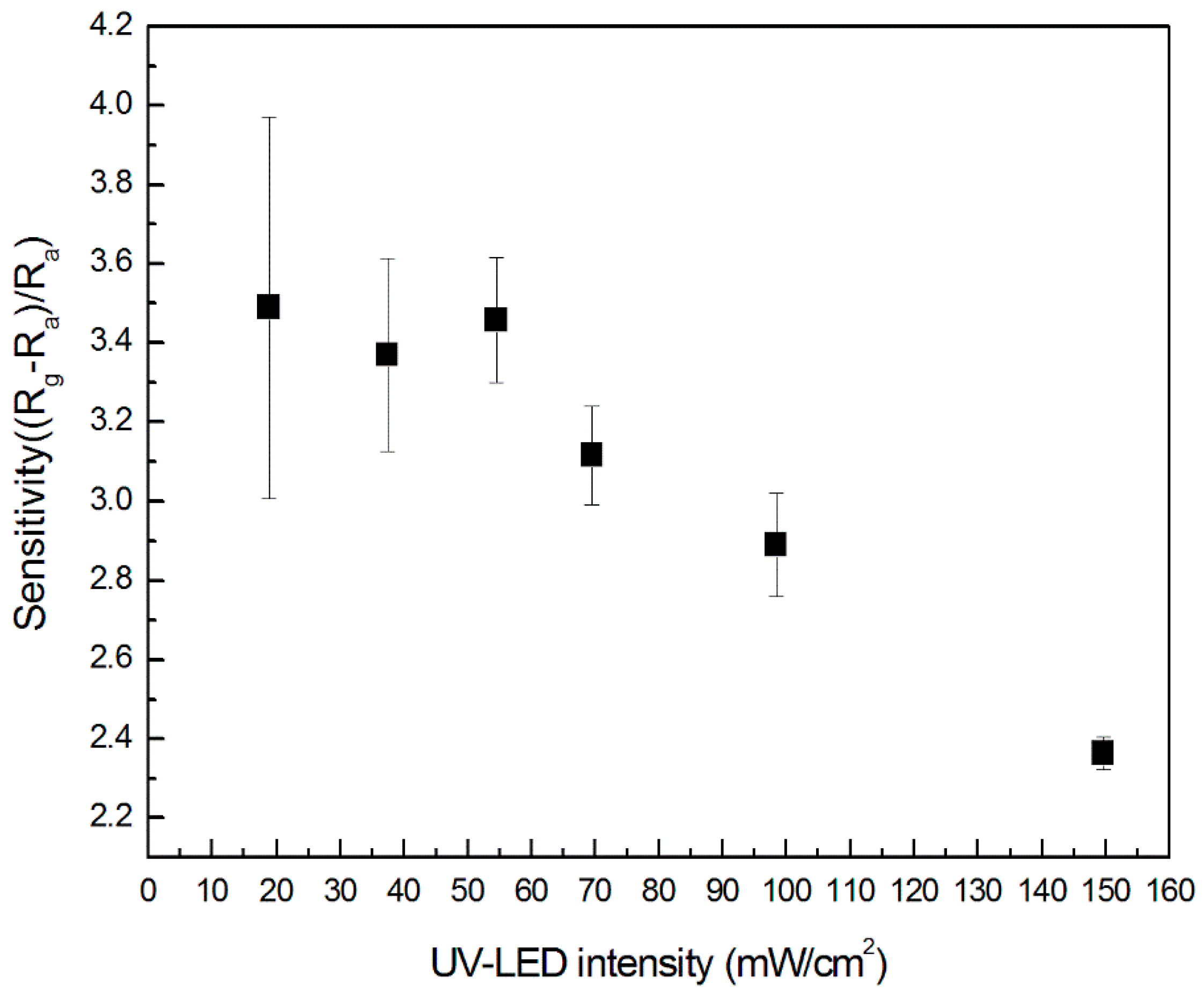
© 2018 by the authors. Licensee MDPI, Basel, Switzerland. This article is an open access article distributed under the terms and conditions of the Creative Commons Attribution (CC BY) license (http://creativecommons.org/licenses/by/4.0/).
Share and Cite
Wu, C.-H.; Jiang, G.-J.; Chang, K.-W.; Deng, Z.-Y.; Li, Y.-N.; Chen, K.-L.; Jeng, C.-C. Analysis of the Sensing Properties of a Highly Stable and Reproducible Ozone Gas Sensor Based on Amorphous In-Ga-Zn-O Thin Film. Sensors 2018, 18, 163. https://doi.org/10.3390/s18010163
Wu C-H, Jiang G-J, Chang K-W, Deng Z-Y, Li Y-N, Chen K-L, Jeng C-C. Analysis of the Sensing Properties of a Highly Stable and Reproducible Ozone Gas Sensor Based on Amorphous In-Ga-Zn-O Thin Film. Sensors. 2018; 18(1):163. https://doi.org/10.3390/s18010163
Chicago/Turabian StyleWu, Chiu-Hsien, Guo-Jhen Jiang, Kai-Wei Chang, Zu-Yin Deng, Yu-Ning Li, Kuen-Lin Chen, and Chien-Chung Jeng. 2018. "Analysis of the Sensing Properties of a Highly Stable and Reproducible Ozone Gas Sensor Based on Amorphous In-Ga-Zn-O Thin Film" Sensors 18, no. 1: 163. https://doi.org/10.3390/s18010163
APA StyleWu, C.-H., Jiang, G.-J., Chang, K.-W., Deng, Z.-Y., Li, Y.-N., Chen, K.-L., & Jeng, C.-C. (2018). Analysis of the Sensing Properties of a Highly Stable and Reproducible Ozone Gas Sensor Based on Amorphous In-Ga-Zn-O Thin Film. Sensors, 18(1), 163. https://doi.org/10.3390/s18010163



